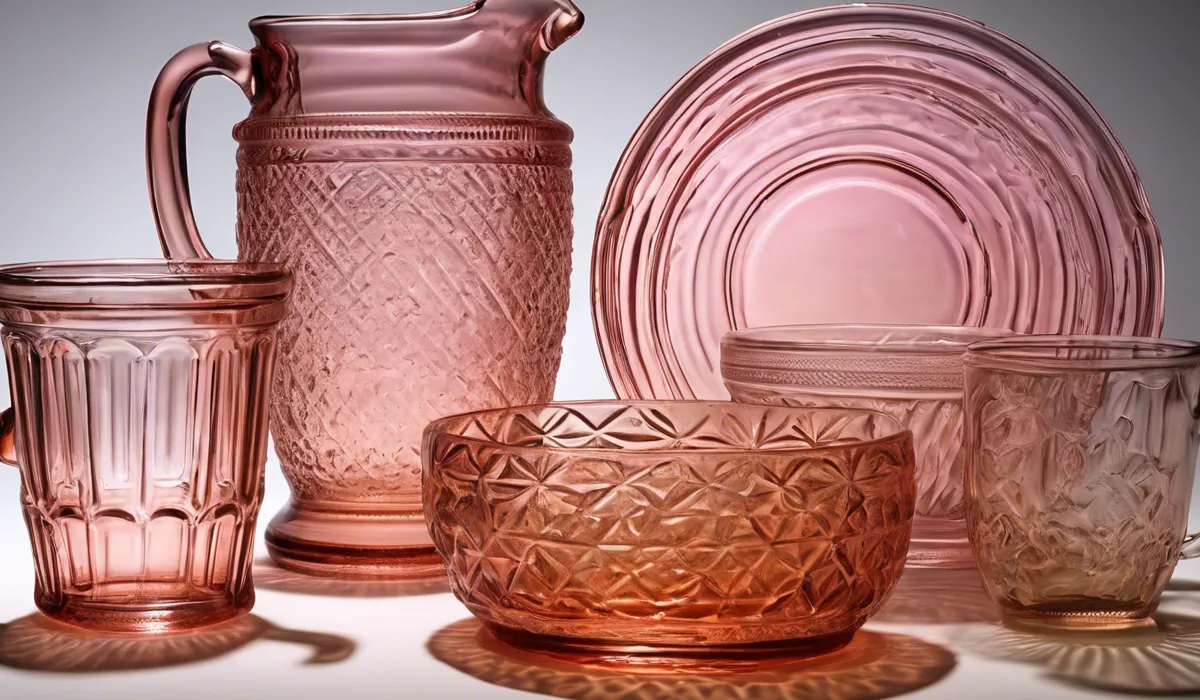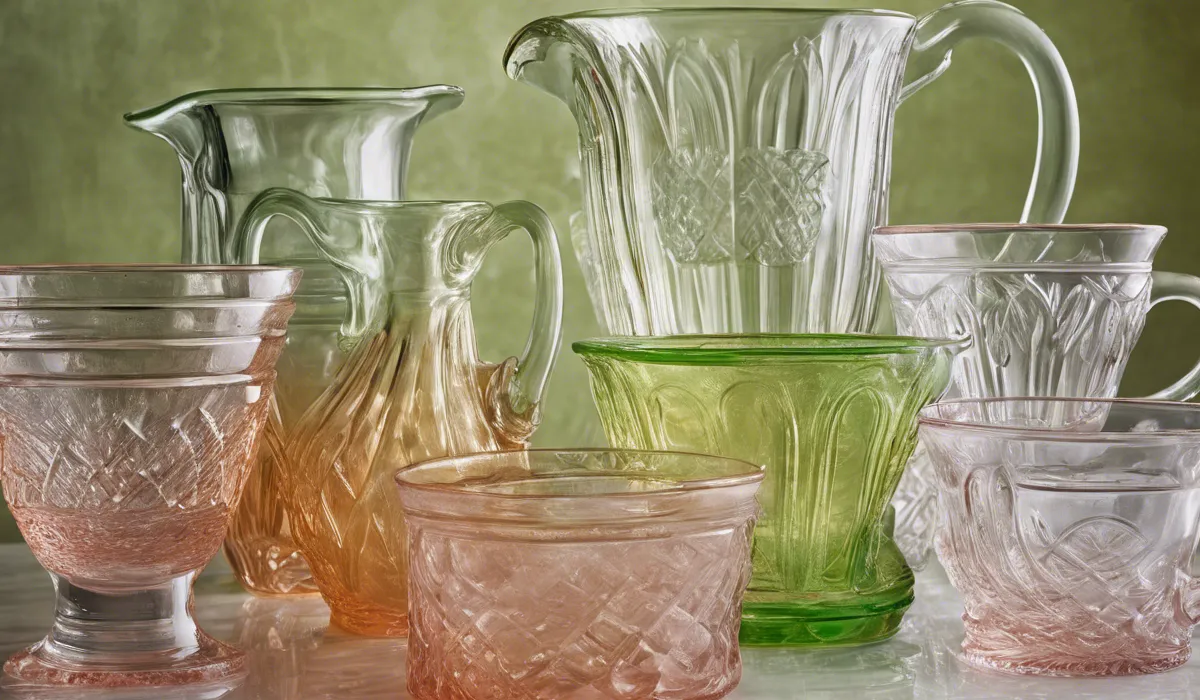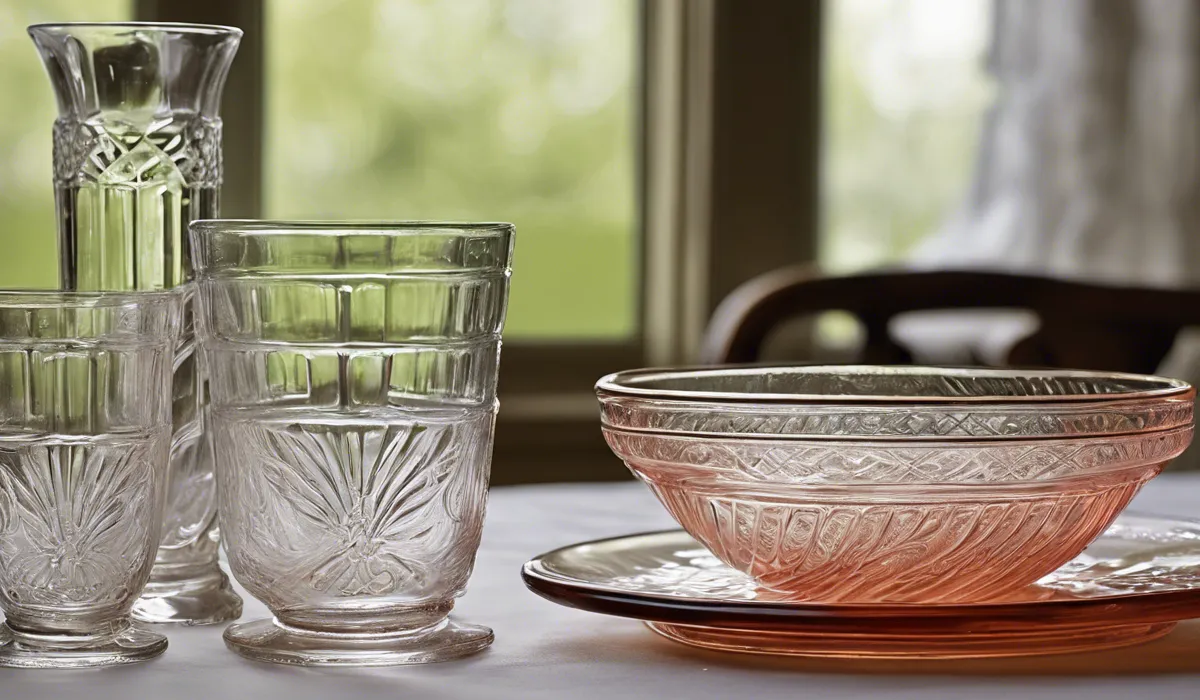Can Depression Glass Go in the Dishwasher? Risks & Tips!
Depression glass should not go in the dishwasher as the harsh environment can damage its delicate design. Hand wash gently with mild soap to preserve its vintage charm.
Understanding Depression Glass

Definition and Origins of Depression Glass
Depression glass refers to the brightly colored glassware that was mass-produced across the United States during the Great Depression era, roughly between 1929 and 1939.
Affordable and often given away as a premium with the purchase of certain products, depression glass brought a sense of cheer to an otherwise bleak economic period.
Manufacturers such as Anchor Hocking, Federal Glass, and Hazel-Atlas produced these glass items en masse, making them a common household item during the 20th century.
Physical Characteristics: Patterns, Colors, and Materials
Depression glass is renowned for its range of intricate patterns, from floral motifs to geometric shapes.
Colors varied widely, with pink, green, blue, and amber being among the most popular. This glassware was made using molds, which allowed for the detailed designs that are beloved by collectors today.
The material itself, despite its beauty, was often of lower quality compared to other glassware and was prone to flaws such as air bubbles and mold marks.
Collectible Value and the Importance of Preservation
Today, depression glass is a cherished collectible, with certain patterns and pieces commanding high prices on the vintage market.
The importance of preserving depression glass lies not only in its monetary value but also in its historical significance, as it represents a unique period in American history.
Proper care and maintenance are crucial to maintaining the glass’s allure and ensuring its longevity for future generations to appreciate.
Dishwasher Risks for Depression Glass

The Effect of High Temperatures and Harsh Detergents on Delicate Glass
Depression glass was not designed to withstand the high temperatures and aggressive cleaning agents found in modern dishwashers.
Exposure to such conditions can lead to a breakdown of the glass’s integrity, potentially causing it to become brittle and leading to cracks or breaks over time.
Harsh detergents can also dull the shiny surface, diminishing the vibrancy that makes depression glass so appealing.
Potential for Chipping, Cracking, and Fading Patterns
The delicate nature of depression glass means it is particularly susceptible to chipping and cracking, especially when subjected to the clattering and movement typical of a dishwasher cycle.
Additionally, the patterns that are so characteristic of depression glass can fade, diminishing the intricate designs that collectors and enthusiasts treasure.
Consideration of the Dishwasher’s Environmental Impact on Antique Glassware
Aside from the physical risks to the glassware, using a dishwasher also introduces environmental concerns.
Antique items like depression glass were not made with the dishwasher in mind, and the stress of a dishwasher’s cycle can shorten the lifespan of these historical pieces, leading to unnecessary waste and loss of valuable antiques.
Best Practices for Cleaning Depression Glass

Handwashing Techniques for Preserving the Integrity of Depression Glass
Handwashing is the recommended method for cleaning depression glass. It is gentler and allows for more control to avoid accidental damage.
Fill a basin with lukewarm water and add a small amount of mild soap. Wash each piece individually, handling them with care to prevent any bumps or drops that could lead to chipping or cracking.
Recommended Cleaning Agents and Tools
When selecting cleaning agents, opt for mild, non-abrasive detergents that are free from harsh chemicals.
Use soft cloths or sponges to clean the glassware, avoiding abrasive pads that could scratch the surface. For hard-to-reach areas, a soft-bristled brush can be gently used to dislodge any debris.
Drying and Storage Tips to Avoid Damage
After washing, depression glass should be dried immediately with a soft, lint-free towel to prevent water spots.
Store your glassware in a secure place where it is not likely to be jostled or knocked over. If stacking is necessary, place a soft layer of padding between each piece to prevent scratches and chips.
FAQs About Depression Glass Care
Can depression glass be cleaned in a dishwasher?
No, depression glass should not be cleaned in a dishwasher as it may damage the delicate material.
What is the recommended method to wash depression glass?
Depression glass should be hand washed gently with mild soap to maintain its condition.
Will the heat in a dishwasher affect depression glass?
Yes, the high heat and harsh environment of a dishwasher can damage depression glass.
Is it safe to use modern detergents on depression glass?
No, it’s best to use mild soap when cleaning depression glass to avoid damage to its delicate design.
Can the rough environment of a dishwasher dull the finish of depression glass?
Yes, the rough environment of a dishwasher can dull the finish and damage the intricate patterns of depression glass.
Final Thoughts
Depression glass, with its unique and fragile nature, requires careful handling. The abrasive conditions within a dishwasher can be harmful to its delicate patterns and colors.
To maintain the integrity and aesthetic of these vintage pieces, it is recommended to hand wash them gently using a mild soap.





